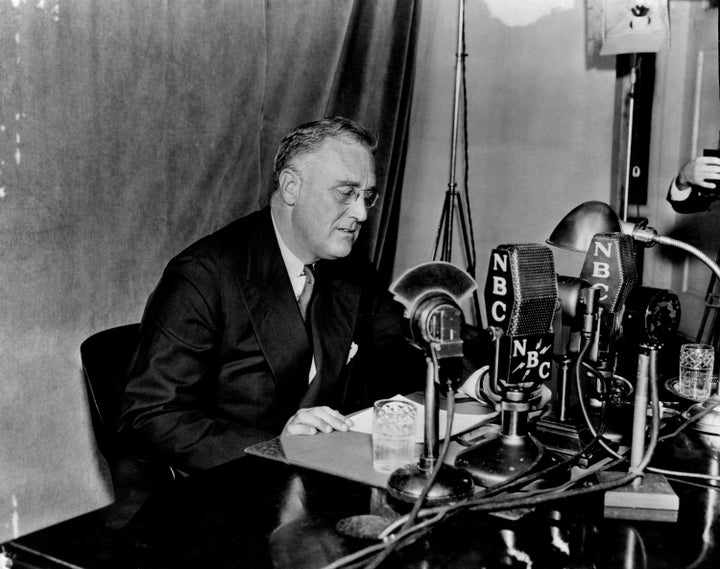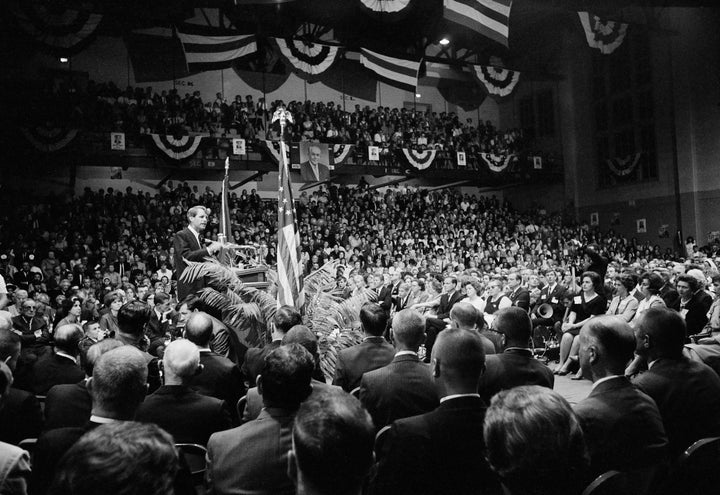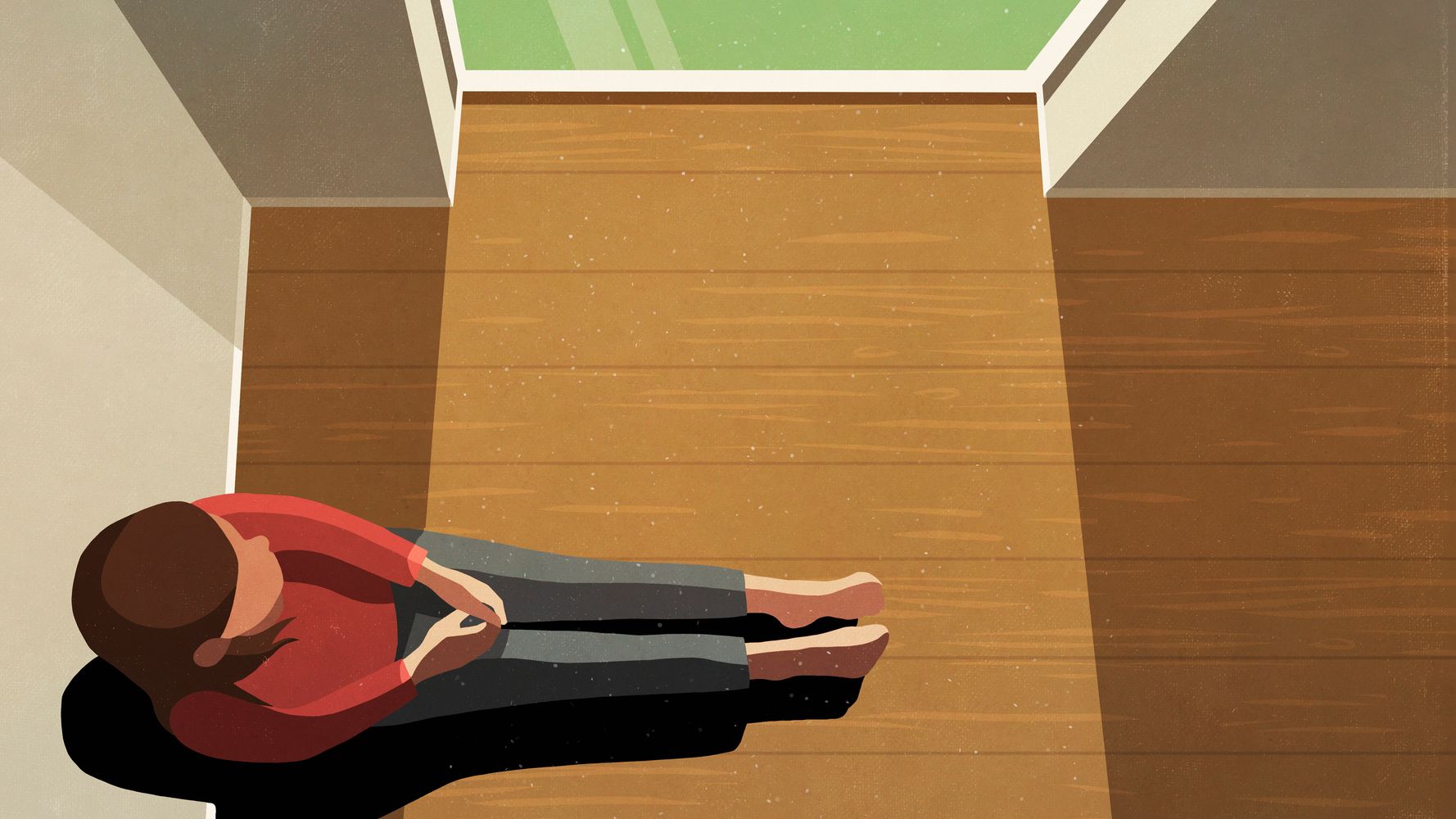Hours before the U.S. death toll from COVID-19 surpassed 200,000, President Donald Trump told supporters at a Sept. 21 campaign rally that the disease “affects virtually nobody.” Two weeks later, he would test positive for the coronavirus himself.
After hearing the latter news, Anna Gaffney of Astoria, New York, said she wondered if the president’s own experience would finally drive home the weight of the pandemic to him. Gaffney lost her mother to COVID-19 in April and since then had been disappointed by the tenor the president took when discussing the virus.
Maybe, she hoped, having firsthand knowledge of how frightening the virus can be would change Trump for the better. Maybe he’d partake in the grief felt by countless Americans touched by COVID-19.
When he was released after a weekend-long stint at Walter Reed National Military Medical Center, the president downplayed the illness once again. On Twitter, he urged Americans to not be “afraid of COVID” and to not “let it dominate your life.”
Gaffney, like so many others, was let down again.
“POTUS had an opportunity to show true leadership by offering words of comfort, determination and strength,” she told HuffPost earlier this month. “Instead he chose words of dismissal.”
Many have noted the leadership vacuum left by the president, but perhaps what’s been missing most from Trump’s handling of the COVID-19 crisis is what psychologists call “grief leadership.”
“Grief leadership is, fundamentally, strong people leadership,” said Alyson Goldstein, an organizational psychology consultant and director of development at On the Goga, a corporate wellness company based in Philadelphia. “Grief leadership is about leading people, whether they’re your friends, employees or a nation, through experiences of sorrow, difficulty and challenge.”
Seven months into the pandemic, grief is widespread and deeply felt in America. As Peter Baker of The New York Times pointed out recently in an episode of “The Daily” podcast, the nation’s death toll is the equivalent of 72 Sept. 11th tragedies.
In one form or another ― a lost loved one, a lost job, a lost sense of normalcy ― we all share in the collective trauma. A strong grief leader would acknowledge that trauma and make sure their people felt heard, understood and supported through it, Goldstein said.
“Of course, that’s no simple task for any of us,” she said.
According to Goldstein, grief leaders who meet the moment do three key things: They facilitate and provide aid and resources, they maintain transparent communication, and they endeavor to truly understand and empathize with their people.
A grief leader sits with sorrow but doesn’t wallow in it. Once they’ve acknowledged the uncertainty and loss, grief leaders give people confidence that the country ― or community or office or family or circle of friends ― won’t be defined by those fears.
They remind people that better days are around the corner, said Susan M. Bartel, a grief counselor and an associate professor of higher education leadership at Maryville University.
“Once that’s established, a good leader in crisis surrounds him- or herself with a strong team and they stay visible,” she said. “They take responsibility and develop a plan of action.”
Why do we need grief leadership?
The term “grief leadership” was coined by researchers from the Walter Reed Army Institute of Research’s neuropsychiatry department. The scientists were studying the after-effects of a December 1985 crash of a military transport jet in Gander, Newfoundland.
As The Washington Post detailed in an article on grief leadership last month, that crash killed 248 members of the 101st Airborne Division, based in Fort Campbell, Kentucky. It upended the lives of the troops’ families and the surrounding military community.
“We want someone who reminds us that we can get through hard things and that we’ll share the weight of it together.”
– Sara Deren, founder and CEO of Experience Camps
In their report, the researchers credited strong, empathetic leadership with lessening the stress and pain experienced by the grieving families and other members of the tight-knit infantry division.
“Leaders who can express their sorrow, fear and sadness while continuing to function will provide a model for others to feel it acceptable to do the same,” the team wrote, adding that they hoped the aftermath of the Gander crash would serve as an example of “consistent, appropriate responses in mass casualty situations.”
The ability to assuage grief is a defining leadership quality because leadership involves holding a collective experience and modeling constructive behavior, said Sara Deren, the founder and CEO of Experience Camps, a national nonprofit that offers summer camps to children and teens who have experienced the death of a parent or close relative.
“Hearing someone share their grief publicly can bring people together,” Deren said. “It can remind us that we are not alone, and that even the most powerful people on the national stage have been touched by grief and can understand parts of what we are experiencing.”
That kind of grief modeling is especially important in the current situation where the lion’s share of grieving occurs behind closed doors. To avoid spreading the virus, there are no big funerals or celebrations of life when a loved one dies. The candlelit vigils we’ve come to expect in the wake of deadly disasters like 9/11 or the Boston Marathon bombings have been eerily absent from this shared experience.
Without those public memorials for the people lost, seeing a leader grieve on a national stage can be especially powerful. It not only validates our collective grief but also helps us move through the pain and get to the other side, Deren said.
“Most people want a leader that gives them hope for better days ahead ― that’s part of grief leadership, too,” she explained. “We want someone who reminds us that we can get through hard things and that we’ll share the weight of it together.”
As American history shows, grief leaders aim for “realistic hope.”
What effective leaders offer in times of crisis is realistic hope, said James Martin, a retired army colonel and professor of social work and social research at Bryn Mawr College.
“Realistic hope comes from a leader’s efforts and ability to seek, evaluate, and then effectively and transparently convey information to those seeking to understand,” he said. “Ideally, the leader is providing their people with information that they can act upon.”
Think of Ohio Gov. Mike DeWine’s quick, science-based COVID-19 response. The governor won rave reviews from public health experts and politicians across the aisle for his no-nonsense handling of the pandemic. Before most others, he banned large events, closed restaurants and bars, and recommended canceling in-person classes at schools and colleges.
Looking back, there are plenty of standup examples of grief leadership in the U.S. Martin pointed to President Franklin Roosevelt and his famous “fireside chats.” Through the Great Depression and World War II, Roosevelt quelled fears with his evening radio addresses to the country, even if he didn’t always have answers to the day’s problems.
“Sometimes we can’t make things better and this is typically when our faithful, constant presence is the important factor, not our ability to make the pain go away,” Martin said. “Those in the hospice field understand this concept of ‘presence.’”

Then there was President Abraham Lincoln. Lincoln ― no stranger to grief, having lost his mother in childhood ― reliably modeled resiliency and grit to the country.
“The most celebrated public example of grief leadership from Lincoln is the Gettysburg Address,” Deren said. “There, the president acknowledges the depth of loss our divided nation was experiencing but also shared his own convictions and modeled a way to carry on.”
More than a century later, Deren said Democratic presidential candidate Robert Kennedy offered a masterclass in grief leadership when he informed an anxious Indianapolis crowd of Martin Luther King Jr.’s death.
“He shared the hard truth and empathized it by talking openly about his own brother’s assassination years earlier,” she said.

Quoting the ancient Greek playwright Aeschylus, Kennedy acknowledged the grief felt in the room while reminding listeners of their power to persevere: “Even in our sleep, pain which cannot forget falls drop by drop upon the heart until, in our own despair, against our will, comes wisdom through the awful grace of God.”
Beyond politics, it’s possible to be a grief leader in your own life.
You don’t have to be the president or a presidential candidate to be a grief leader. As millions of Americans suffer job losses and the number of COVID-19 cases continues to rise, the only real certainty we can expect in future days is more uncertainty. As unnerving as that may be, it gives us all an opportunity to tap into our inner grief leadership.
Examples are all around us: Think of a family member who goes above and beyond to check in on siblings, cousins, and nieces and nephews after the family matriarch dies. Think of a work manager who, amid rumors of pending layoffs, tries to put staff at ease by sharing everything they can about the situation.
Anyone can be a grief leader, Deren said. All you need is the courage to share your story and the strength to hold a piece of someone else’s grief when they share their story in return.
“Grief leadership in our personal lives is about seeking to understand what a grieving person needs instead of making assumptions,” she said. “It’s acknowledging that there is no timeline, no right or wrong way to grieve, and no two stories alike. And it’s following through with action, communication and compassion over the long term.”
Grief leadership, at base, is fairly simple: It’s saying “I’m here for you” and then really being there, with genuine empathy and action.
Whether you’re the leader of a country or just someone checking in on a grieving friend, “when you allow yourself to be vulnerable, it gives others permission to be vulnerable as well,” Deren said. “That alone can be powerful.”


